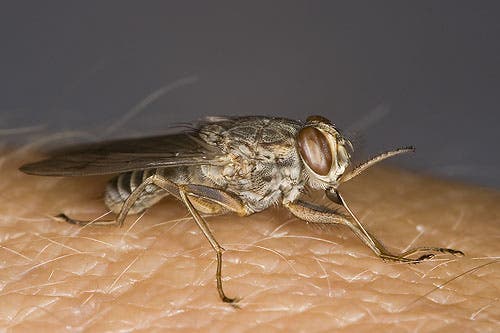A study conducted on 2000 year old tooth enamel found that ancient farmers traveled to the grassy plains southern Africa to develop herding away from the dangerous tsetse fly.

For seven million years, humans and our ancestors relied on hunting, scavenging, fishing and fruit gathering to survive, but 12,000 years ago, something changed – something which would mark the beginning of civilization as we know it and which would ultimately enable us to reach 7 million people today. Interestingly, in Africa, animal domestication came before plant domestication, as herders moved from Eastern to Southern Africa sometime between 10,000-8,000 years ago. Now, researchers have finally figured out the migration route, and also understood what caused early humans to move in such a strange way.
“We studied the chemical signature of teeth in wild antelopes and domestic plant-eating animals – cows and sheep or goats – and found they all were eating a lot of grass in the Lake Victoria Basin,” says Kendra Chritz, first author of the study published online this week in the journal Proceedings of the National Academy of Sciences. “That means Lake Victoria could have been an area through which people passed while migrating southward to southern Africa,” adds Chritz, a paleoecologist and University of Utah doctoral student in biology.
The main driver for the rather awkward migration pattern was a small creature called the tsetse fly.
“The route people took on this southward migration has been a mystery, but recent genetic evidence supports that people moved from east Africa to southern Africa about 2,000 years ago,” she says. “The specific route out of Kenya has been debated. It was thought that Lake Victoria wasn’t part of the route because of a natural barrier – namely, a cool, moist, bushy environment filled with tsetse flies that would have infected humans and livestock with African sleeping sickness, which can be fatal.”
The tsetse fly lives by feeding on the blood of vertebrate animals. They can carry several nasty diseases, including the so-called sleep disease – a parasitic disease of humans and other animals which initially leads to confusion, poor coordination, numbness and trouble sleeping, and without adequate treatment, is often fatal. For the herders inhabiting Africa 10,000 years ago, it was an almost inescapable fate.
Chritz conducted the research with University of Utah geochemist Thure Cerling, the senior author, who now is doing field work in Africa, and with M. Esperanza Zagal, an undergraduate in chemistry and anthropology. Other co-authors were archaeologist Fiona Marshall, of Washington University in St. Louis, and Francis Kirera, a paleontologist at Ross University School of Medicine in Miramar, Florida. Together, they managed to show how one of the most important activities in human history developed in its early stages.
“Food production led to modern human society,” Chritz says. “Food production may have helped change our way of living – like building cities and having a political system with a central governing body.”
Journal Reference: Kendra L. Chritza, Fiona B. Marshall, M. Esperanza Zagalc, Francis Kirerae, and Thure E. Cerlinga. Environments and trypanosomiasis risks for early herders in the later Holocene of the Lake Victoria basin, Kenya. doi: 10.1073/pnas.1423953112






